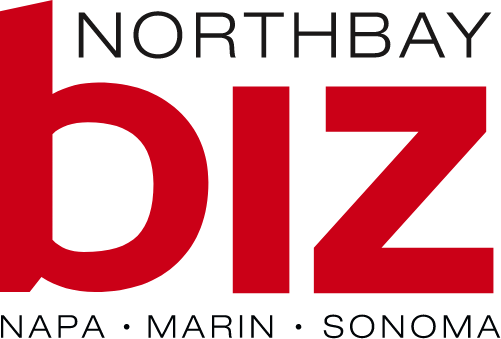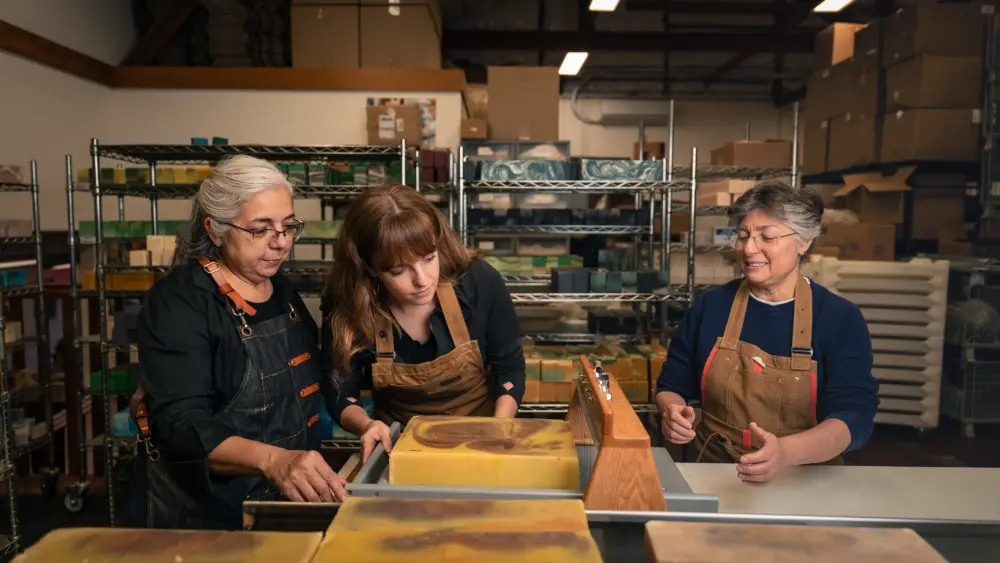Keller Williams is a real estate company that moves to the beat of its own drum.
A new noun has entered the local lexicon:
Kellerfornian, a person who has been—here comes a new verb—kellerized.
Now, before you groan, bear in mind there are more than 125 kellerized Kellerfornians in Sonoma County, and the number is growing rapidly.
Realtors all, they’re an accomplished lot who’ve recently joined Keller Williams Realty. Founded in 1983, Keller Williams began franchising in 1996 and entered California in 1999. It’s now the fourth-largest real estate company in the nation, with 700 offices and 73,000 agents in the United States and Canada. The firm launched its first market center in Sonoma County, on Stony Point Road in Santa Rosa, in April 2006, with 41 agents.
“The goal was to have 150 agents by the end of 2007, but it looks like we’re going to have closer to 200. And by then we’ll launch our second office in Sonoma County. The big talk right now is where it will be,” says Eileen Morelli, team leader for the Santa Rosa market center. Also a broker (as are many in the Keller Williams fold), Morelli has been in the profession for 27 years.
The next top model
The name Keller might sound familiar; the company’s co-founder, Gary Keller, has had two titles hit The New York Times business book best seller list: The Millionaire Real Estate Agent (McGraw-Hill, 2004) and The Millionaire Real Estate Investor (McGraw-Hill, 2005); he also wrote the foreword to Rick Villani and Clay Davis’ best seller Flip: How to Find, Fix and Sell Houses for Profit (McGraw-Hill, 2006).
And if you were to call Morelli and her team la crème de la crème, you wouldn’t be far off base. It’s part of the company’s business model to recruit the very best in the field. After growing the Sacramento area from 10 agents in one office in 2001 to its current 1,350 agents in nine offices, Don Yoakum set the ball rolling in Sonoma County with his partner, Matt Murphy. They began meeting with local agents one by one in September 2005, asking who were the most respected. Morelli’s was one name that came up. After an initial meeting, they invited her to attend an annual event for top producers (called Mega Agent Camp) in Austin, where the company is headquartered.
“I was working with CPS at the time and had no complaints. It was a different business model,” she recalls. “But I was intrigued about Keller Williams’ agent-centric model.” Traditional real estate business models are either dependent, where a company provides agents advertising and office support but charges a premium for it, or independent, where agents receive minimal support but retain a higher percentage of commissions. “Keller Williams is entirely new. Some people say it’s really a training and coaching company disguised as a real estate company,” she adds, while holding up a thick stack of folders containing résumés sent in by hopeful agents who’ve made the first cut and will be invited to her office for an employment interview.
About the initial training she attended, Morelli says, “I had already joined mentally before they even started the program.” She points to two things that convinced her. First, the event took place shortly after Hurricane Katrina hit the Gulf Coast. The first action the company took was to make sure every Keller Williams agent in the devastated region was adopted by a Keller Williams market center elsewhere in the country to help the agents and their families get back on their feet. Then, bidding was opened for front row seats at the conference. “It was something to watch,” she remembers. “People would put in the highest bid on a chair and then instead of sitting in it, they’d stand up and donate it back [meaning multiple bids and more money]. They raised close to $100,000 for Katrina relief just bidding on those chairs. You could say they had me at ‘hello.’”
This dedication to community is one aspect that draws people to the company. “We’re here to serve people, and Keller Williams stresses that over and over again,” says Sharon Hamilton, who joined the company with her husband, Don, and daughter, Christen, in November 2006. In business for almost 20 years, the Hamiltons work from an office in a building they own, but they’re part of the Santa Rosa market center.
Before joining Keller Williams, the Hamiltons worked with Coldwell Banker and Re/Max. “I’ve worked for companies where the most important thing you had to focus on was not getting sued. That’s certainly important, but it wasn’t service-based. This company is totally based on how to take better care of people. How do we provide better customer service? Finally, somebody got it right: Let’s start treating everyone well. It’s more like those old-time agents who worked really hard and did a great job for their clients, where they shook hands and promised something and it was done.”
One ramification of this emphasis is that clients aren’t pressured to buy. “We’re into building relationships, not making a quick sale. It’s about what a customer needs most, not what we need. We’d rather sell a client something in two years than sell them something they can’t afford now,” Morelli says.
Learn something new every day
To assist agents in reaching their potential, Keller Williams provides extensive educational opportunities, many of which are open to all agents, not just those working with the company. Agents, in turn, educate their clients.
“I can go on the Keller Williams website any day, and it has classes going on through the whole system. Let’s say I’m not great at my budget. I can take a class and learn how to set it up. They have forms and everything,” says Patty Ann Foley, a realtor for 19 years who joined Keller Williams in September 2005. “They break everything down into the day-to-day nuts and bolts of exactly what you have to do.”
In addition to the online courses, the company offers an extensive catalog of classes in a range of contexts and media, from video presentations and group classes at market centers to company-wide boot camps and topical conferences to one-on-one coaching. “There’s one class that’s ongoing called ‘4-4-3,’” Foley says. “They guarantee you’ll have no less than four listings and four closed sales in three months if you do what they tell you to do. That’s pretty remarkable for new agents, and for a lot for experienced agents, that’s really good. I know a lady who was a realtor for about a year and she told me she didn’t know very much about how to generate leads or how to build her business. I recommended our classes. She started taking them and learned so much, she decided to join us.”
Some of the education goes beyond just real estate. One of the most popular classes in the Santa Rosa market center meets weekly and is called “Tuesdays with Eileen.”
“Basically, the sessions make people think outside of real estate and maybe outside of where they are in their life,” Morelli says. “We did Dr. Fred Gross’ course called ‘Black Belt of the Mind,’ which challenges you to live a life of mastery. We did Susan Scott’s course called ‘Fierce Conversations.’ She’s a well-known author and coach for international CEOs. And the next course we’re doing is called ‘212 Degrees.’ It’s based on a book out now about how, with just a slightly better, more concentrated effort, your life can change—as at 211 degrees, water’s really hot, but at 212 degrees, it boils. It’s all about how doing that little extra thing for yourself or someone else makes a huge difference.”
Sometimes, education takes the form of a game. On a recent Wednesday evening at the Santa Rosa market center, a table was set up in the Blue Room with the board game Cash Flow, which was created by Robert Kiyosaki, author of the popular book, Rich Dad, Poor Dad. Agents and their guests arrived and played the game, which teaches investing skills. “We have a great time with it, and it helps people grow,” Foley says.
Build it yourself
The name “Blue Room” comes from the conference room’s blue-hued theme, complete with limited-edition photographs on canvas taken by Morelli’s husband, Ralph William Chubb. Next door, the tropically themed Cabo room has a palm tree and several warm-colored Chubb prints surrounding its table and chairs. And a print of a grapevine (also by Chubb) is in the reception area, which, until this March, was equipped only with a sign stating “Reception” and an arrow pointing to a cubicle halfway down the office. Displaying Chubb’s work and, in the future, that of others is one way the company intends to support local artists.
The delay on establishing a reception center can be traced to the company’s philosophy of leading with revenue. After launch, each market center is expected to be profitable within 18 months. An important part of reaching this goal is to avoid acquiring debt. When the Santa Rosa market center first opened, there was no furniture or equipment, not even a phone line. Until that point, agents had been “incubating,” working from their homes, cars—wherever they could find space. Many left well-appointed offices to do so.
At each market center, a committee of local Keller Williams agents, called the Agent Leadership Council, determines how to allocate resources as funds are earned. Starting with a microwave in the kitchen and then a refrigerator, the Santa Rosa Agent Leadership Council has since equipped the office very well, paying for everything in cash. Stars line one wall of a large conference room filled with desks, which the agents whose names are on the stars assembled themselves. Morelli says this room is the largest facility devoted to real estate education in Sonoma County. The market center saved thousands of dollars by doing its own assembly.
Why would an agent join a firm where he or she might end up assembling furniture? “What appealed to me was the emphasis on the agent and the agent’s relationship to the client and then to the company,” says Mike Kelly, who was 2005 Realtor of the Year for the Santa Rosa Chapter of Realtors. “The corporate values suited mine to a tee, as did the ability to profit-share in the success of our particular market center. So far, it’s exceeded my expectations and pushed me to the next level of performance and understanding of my place in the business world.”
Kelly says that if you follow the model provided in The Millionaire Real Estate Agent, you’ll improve or expand your business dramatically. “Even though I’ve been in the business for more than 28 years, I needed a map to bring all the knowledge I’ve collected to bear upon my business. The book is the map,” he says.
A winning combination
Grace Lucero, who joined the company in 2006 and brought five agents with her, had already read the book and used some of Keller’s methods in her own company, Lucero Real Estate Group in Cloverdale. She’s been in real estate for 10 years. “I had great success when I implemented the systems and methods from Gary Keller’s book at Lucero Real Estate Group,” she says. Joining the company for her was a no-brainer. “Keller Williams offers wonderful training for new agents as well as seasoned agents. I love the energy, synergy and how helpful everyone is. You can’t go to the office and not feel enthusiastic about the business,” she says.
Hamilton also likes that Keller Williams provides more than one way for agents to make money. She owns a percentage interest in the Santa Rosa market center, for example. “Instead of commissions being the only way you can make money, you can invest in your market center as well as other market centers that open up. And you’re able to recruit people and earn residual income that way, too,” she says. “I’m getting older, and it’s very attractive that I can actually set up a business to pass on to my children. And I don’t have to be a manager to do it. All I have to do is help the office grow.”
“Nobody’s better than anyone else here,” Foley adds. “Everybody’s treated equally. They don’t allow big egos, and they’re always looking at how they’re going to do good for the community and the people who work for them.” One equalizing factor, Foley says, is that there’s “a cap on what goes to Keller Williams. Once that cap is reached, an agent is at 100 percent commission. Depending on the gross commissions from each sale, it may take one big sale or several, but for me as an agent starting my 19th year this week, I find it remarkable that I can make so much more income than I’ve ever been afforded before.”
Support among agents goes from big things, such as one top agent actually donating a kidney to a colleague, to little things. “The other day, somebody saw one of my listing signs was crooked. He stopped, picked it up and put it back in place. I’ve never experienced that with another company,” Hamilton says. “We all feel like we’re part of the same team, part of the same family.”
Morelli isn’t the only one to admit she was getting a bit burned out on real estate before joining Keller Williams. “I could do my job by rote. It was something I could do well, but it wasn’t really exciting anymore. Now I wake up at five in the morning, excited with ideas, and can’t wait to start the day. It was just a whole paradigm shift. There’s a spring in my step. I’m happier now.” She also feels the training she’s had as Sonoma County’s team leader is invaluable. “They’ve empowered me to such an extent. I have the business skills to run a company and to make it work. I can really understand financing, budgeting and advance planning—and I have the right reports to monitor the company’s status. You can see how a slight shift can make a huge difference. I feel like I could run a major corporation. It’s just a thrilling time.”
If that makes you think a Kellerfornian is a great thing to be, well, you’re in good company.



